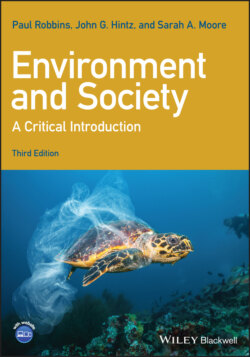Читать книгу Environment and Society - Paul Robbins - Страница 25
Box 2.1 1Environmental Solution? The One-Child Policy
ОглавлениеThe People’s Republic of China’s “One Child Policy” came to an end in 2015. Viewed originally as a solution to “overpopulation,” the suite of penalty and incentive policies created by the Chinese state in 1979 appears flawed in retrospect. Indeed, China’s more recent concern is underpopulation.
This radical family planning policy upended reproductive decision-making across the country and changed the demographic face of the country. The change in family size was accomplished through a set of fines leveled against families having more than one child, coupled with incentives for single-child families to obtain education and other elite privileges. Though rural families and some ethnic minority groups were exempted, a significant proportion of the Chinese population lived under the constraints of this law, which strongly incentivized small families. In 1979, the fertility rate in the country was a relatively high 2.9, and in rural areas it was perhaps double this figure. According to the World Bank, the current fertility rate of the country is a remarkable 1.7. This wholesale transformation of family size has been greeted by many as a model and by others as unnecessary and regressive.
The advantages of a slowing growth rate are several. They include a potential lessening of demand for natural resources, though as a growing proportion of China’s one billion citizens enter the middle class, the overall resource demands of the economy have expanded on the whole. The potential effect on the country’s environmental impact from the generation of waste, air pollution, and greenhouse gases is also celebrated by observers, though here again the rapid industrialization of the country has meant an overall increase in all three problems.
The disadvantages of the policy are more indirect, but nonetheless widespread. First, a cultural preference for boys has caused widespread sex-selective abortion of females, resulting in a wildly skewed ratio of young men to young women in the current generation. Estimates put the ratio at roughly 120 males to 100 females in the population under 15 years. This trend is exaggerated over time, and the National Population and Family Planning Commission estimates that Chinese men will outnumber women by 30 million in 2020, with implications for social stability. Second, the traditional family structure, in which children collectively cared for aging parents, has been put under enormous stress.
Perhaps the most understated feature of the one-child policy is that the reduction in family size may only be partly attributable to the law. Falling birth rates have accompanied industrialization throughout Asia, as changing economic conditions have created their own incentives for smaller families. In countries like Japan and South Korea birth rates have plummeted in the past 40 years, without any state-sponsored population policies, and with fewer attendant social problems and shocks. Given that the Chinese resource and environmental impact footprints are still growing dramatically, critics suggest the policy was largely misconceived.
Most remarkably, by 2020, China was searching for new policies to increase family size. With a skyrocketing dependency rate (ratio of old to young people), a decline in care for the elderly, a disappearing labor force, and general stagnation have become national concerns.
To what degree does the historically meteoric growth of population in China (or the United States or anywhere else in the world) represent an environmental crisis? How have affluence and lifestyle influenced this impact? Is there enough water to allow 10 billion people to survive on the planet? Many explorations of the relationships between environment and society typically start right here, asking a basic question: Are there simply too many people? Can the world support us all? If not, can human numbers ever be expected to stop growing? How and when?
